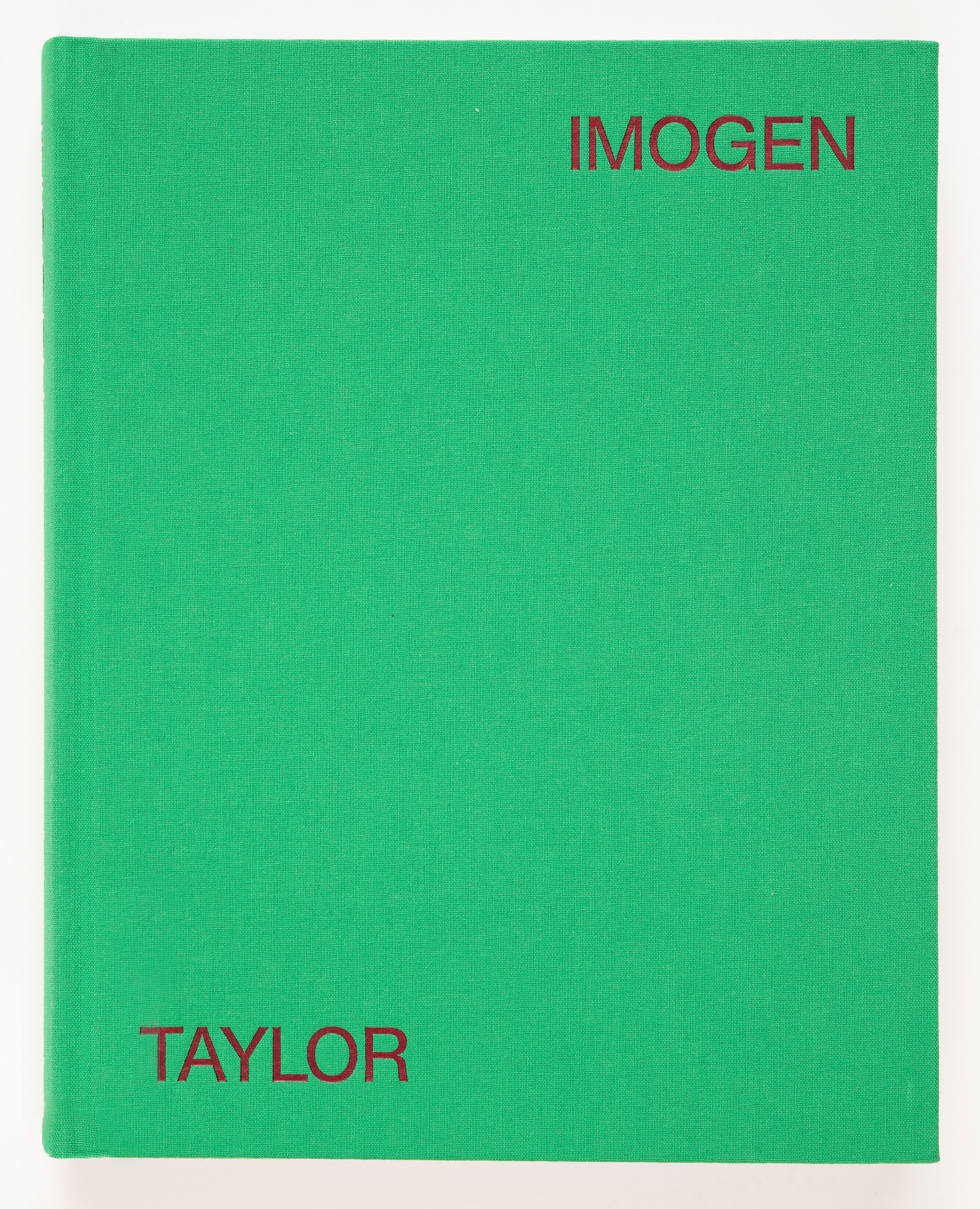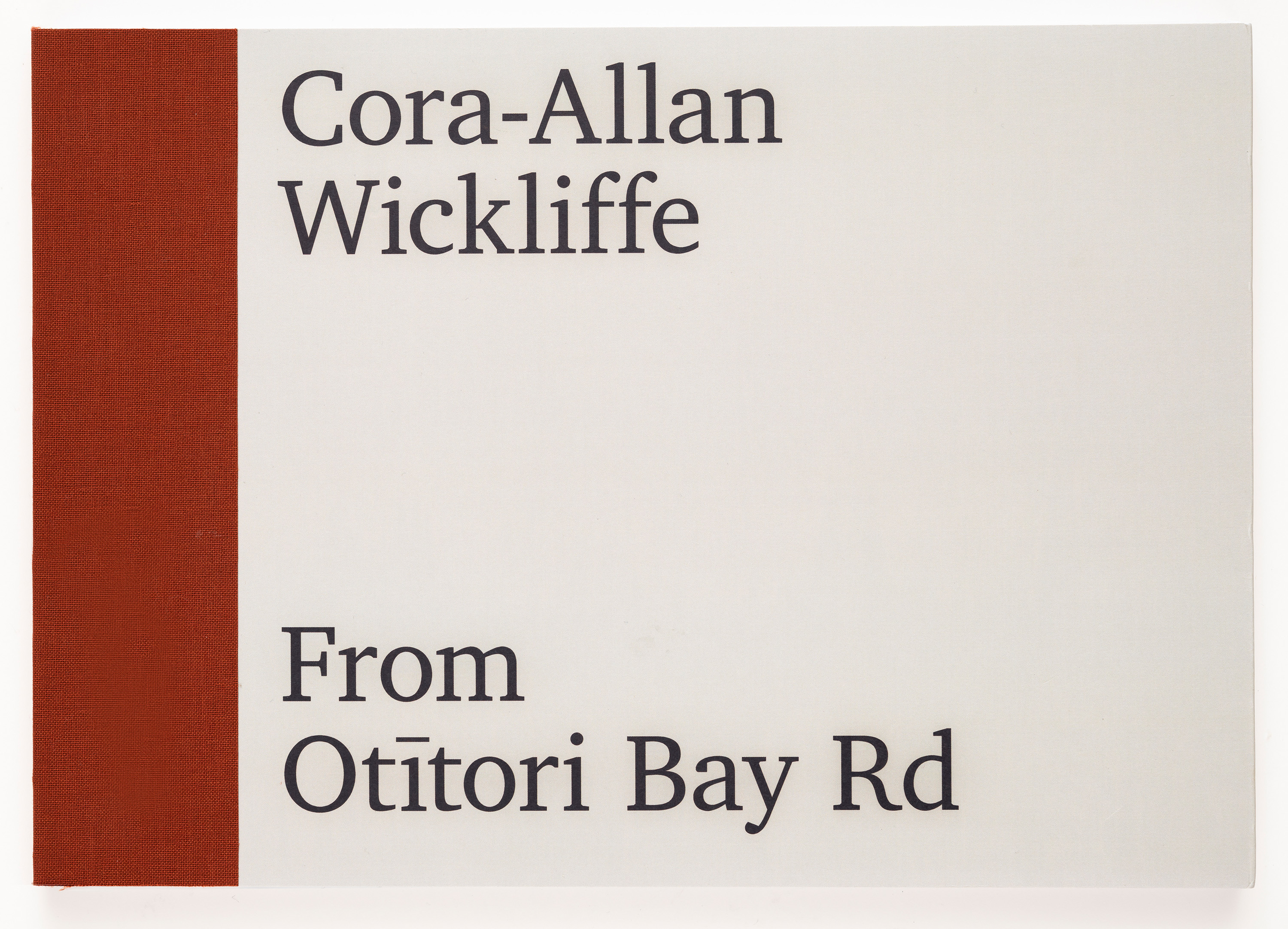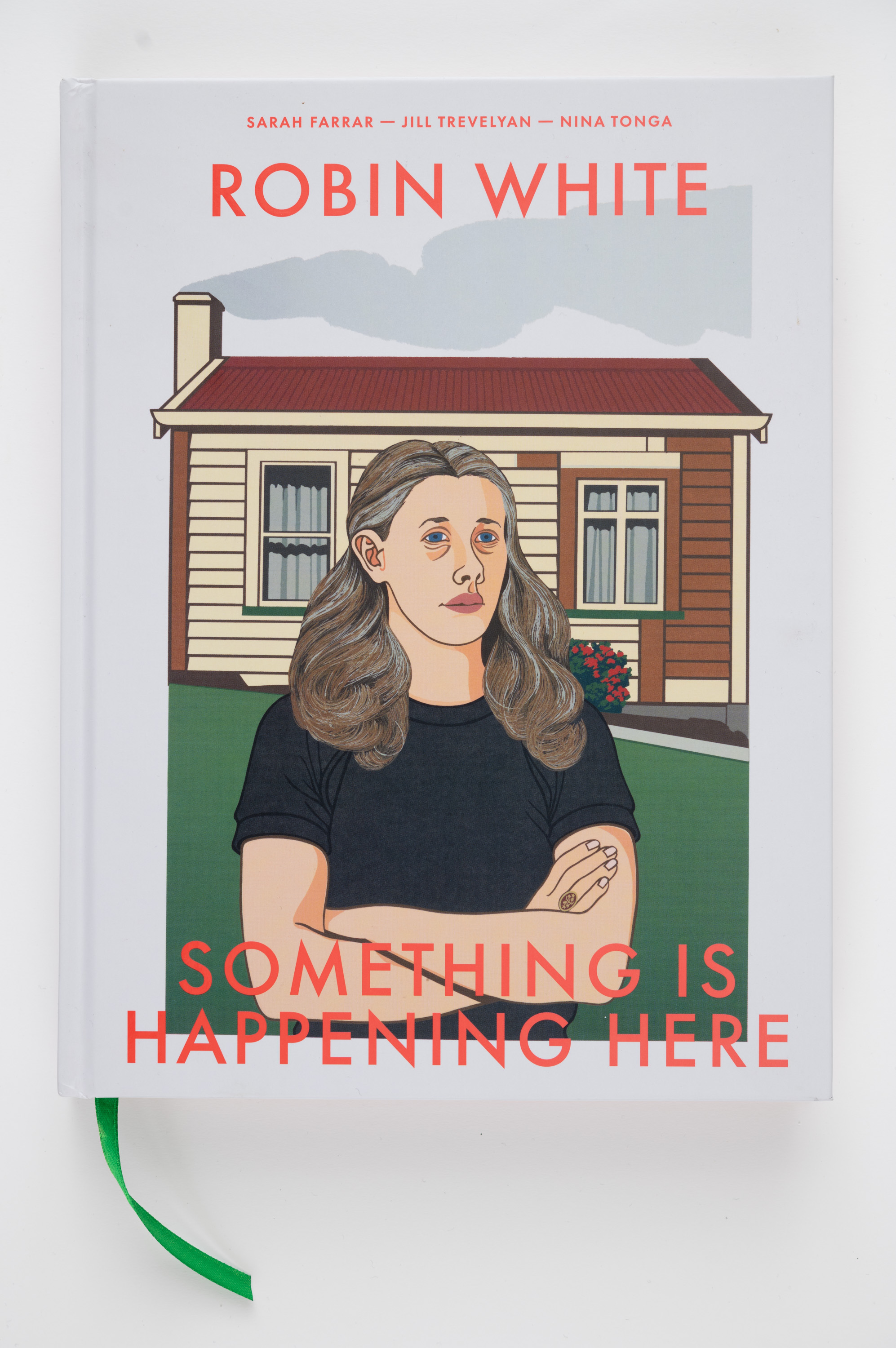Dr Sarah Farrar, Jill Trevelyan, Dr Nina Tonga, Robin White: Something is Happening Here, Auckland Art Gallery Toi o Tāmaki & Te Papa Press, 2022
This is the first comprehensive book to be dedicated to New Zealand artist Robin White in 40 years. Covering the entirety of White’s 50-year art practice, the publication takes you on a journey through time and place: we join White in Tāmaki Makaurau Auckland, Paremata, Ōtepoti Dunedin, Kiribati and Whakaoriori Masterton, gaining rich understanding of how her distinctive yet diverse art practice has consistently evolved in response to her changing environments and the artists she met, friendships she forged, and the communities she became part of.
Written and edited by exhibition curators Sarah Farrar and Nina Tonga as well as art historian Jill Trevelyan, the text is further enriched by the contributions of numerous other writers, who each respond to a particular artwork of White’s, encouraging us to consider her works in greater depth and with fresh perspective. Nina Tonga discusses Brigid and Florence in White’s woodblock print series and artist book Twenty-eight Days in Kiribati, 1985. The series was created for Robin White’s daughter Brigid, who with her mother took a trip to Kiribati in January 1984 with fellow artist and close friend Claudia Pond Eyley. In the following section of the book we then meet Florence in person, who is featured in conversation with Meria Russell. As someone who has long admired this woodblock series, these contributions offered me wonderful insight about the people in the prints and their relationship with White.
In the final short essay, Robin White talks about her recent work, Aio ngaira – This is us, 2021. Based on drawings she made of Bikenibeu village in Tarawa, the watercolour paintings represent her and her family’s time in Kiribati. In considering the work, White discusses the cultural and environmental concerns for the island as well as the legacy of portrayals of the Pacific by European artists such as Joseph Dufour and Paul Gauguin.
The catalogue accompanies a major exhibition – Robin White: Te Whanaketanga | Something is Happening Here – which has been produced by Auckland Art Gallery Toi o Tāmaki in conjunction with Museum of New Zealand Te Papa Tongarewa. It is currently on display at Te Papa before coming to Auckland Art Gallery Toi o Tāmaki in October this year
To find out more about this landmark publication, check out the July issue of the Gallery's Art Toi magazine, which features an article that interweaves quotes by White and the publications editors to explore the significance of time, place and people in Something is Happening Here.




